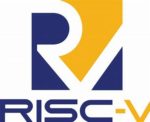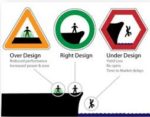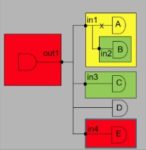As software content increases in system-on-chip and system-in-package designs, emulation has become a critical enabling technology for the software team. This technology offers software developers the opportunity to verify their code in against a high-fidelity model of the target system that actually executes fast enough… Read More
RISC-V SDKs, from IP Vendor or a Third Party?
Like many of us, I’m a fan of open-source solutions. They provide common platforms for common product evolution, avoiding a lot of unnecessary wheel re-invention, over and over again. Linux, TensorFlow, Apache projects, etc., etc. More recently the theme moved into hardware with OpenCores and now the RISC-V ISA. All good stuff.… Read More
Low Power and RISC-V Talks at DAC2020, Hosted by Mentor
I’m going to get to low power and RISC-V, but first I’m trying out virtual DAC this year. Seems to be working smoothly, aside from some glitches in registration. But maybe that’s just me – I switched email addresses in the middle of the process. Some sessions are live, many pre-recorded, not quite the same interactive experience… Read More
How About a Faster Fast SPICE? Much Faster!
When Analog FastSPICE was first introduced in 2006 it changed the landscape for high performance SPICE simulation. During the last 14 years it has been used widely to verify advanced nanometer designs. Of course, since then the most advanced designs have progressed significantly, making verification even more difficult. Just… Read More
Mentor Cuts Circuit Verification Time with Unique Recon Technology
Most of us will remember the productivity boost that hierarchical analysis provided vs. analyzing a chip flat. This “divide and conquer” approach has worked well for all kinds of designs for many years. But, as technology advances tend to do, the bar is moving again. The new challenges are rooted in the iterative nature of high complexity… Read More
Novel DFT Approach for Automotive Vision SoCs
You may have seen a recent announcement from Mentor, a Siemens business, regarding the use of their Tessent DFT software by Ambarella for automotive applications. The announcement is a good example of how Mentor works with their customers to assure design success. On the surface the announcement comes across as a nice block and… Read More
Siemens Acquires UltraSoC to Drive Design for Silicon Lifecycle Management
As reported recently by Dan Nenni, Siemens has signed an agreement to acquire Cambridge, UK-based UltraSoC Technologies Ltd. We’ve all seen plenty of mergers and acquisitions in EDA. Some transactions perform better than others. The best ones enhance an existing product or service by blending non-overlapping technologies.… Read More
Fast and Accurate Variation-Aware Mixed-Signal Verification of Time-Domain 2-Step ADC
There is an interesting white paper out from Mentor on how a customer used the Solido Varation Designer tool to reduce Monte Carlo simulations. As you may know I worked for Solido for 10+ years up until they were acquired by Mentor in December of 2017. It was an incredible personal and professional experience. I have the highest respect… Read More
Why Go Custom in AI Accelerators, Revisited
I believe I asked this question a year or two ago and answered it for the absolute bleeding edge of datacenter performance – Google TPU and the like. Those hyperscalars (Google, Amazon, Microsoft, Baidu, Alibaba, etc) who want to do on-the-fly recognition in pictures so they can tag friends in photos, do almost real-time machine… Read More
The Moving Target Known as UPF
As if engineers did not have enough difficulty just getting everything right so that their designs are implemented functionally correct, the demands of lowering power consumption require changes that can affect functionality and verification. Techniques such as power gating, clock gating, mixed supply voltage, voltage … Read More











